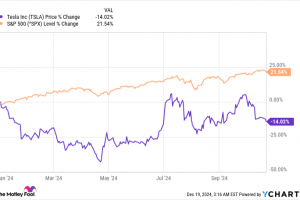
Investors in Apple have had an un-Apple-like year, but at least one analyst thinks that will change in 2023.
The tech giant’s stock has dropped 25% in 2022, lagging the S&P 500’s 19% drop.
The decline comes despite Apple often being viewed as a safe-haven investment, as it boasts a formidable balance sheet flush with cash and a steady stream of repeatable services income.
But just like other large companies, the volatile global economic backdrop has hit Apple in the form of slowing iPhone and accessory sales, as well as production delays out of COVID-19-stricken China.
Apple’s stock now trades on a forward price-to-earnings ratio of 22, a roughly 21% discount to its historical average. At 16 times forward enterprise-value-to-EBITDA, Apple’s stock trades at a 17% haircut to its historical norm.
The more compelling valuation on mighty Apple has caught the attention of long-time tech analyst Jim Suva at Citi.
“We believe demand for Apple’s products and services is likely to remain resilient throughout FY23. We do recognize that regulatory risks remain a major overhang on the stock, but we view these as headline risk rather that fundamental risk. Such headlines could provide a near-term stock pullback which we would view as a buying opportunity for Apple shares,” Suva wrote in a new 20-page report to clients.
Suva reiterated a buy rating on Apple with $175 price target, which assumes about 30% upside from current levels.
Added Suva, “Apple’s current market value does not reflect new product category launches. This will change with the launch of the new AR/VR headset in 2023 and foldables in 2024.”
Here are the six factors behind Suva’s bullish 2023 call on Apple.
Here comes India: A little appreciated factor in Apple’s future growth is India, Suva says. The biggest bullish factor on India, Suva says, is the growing wealth of the country’s population. “India’s upper-mid and high-income middle class, with incomes of $8.5K+, is expected to double from currently representing 25% of its households to more than 51% of total households (~200 million). These households are…
..






